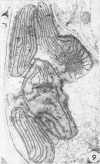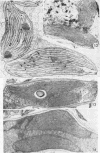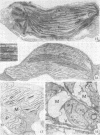Abstract
Levulinic acid inhibited the greening of etiolated maize (Zea mays) and bean (Phaseolus vulgaris) leaves and caused accumulation of δ-aminolevulinic acid (ALA). ALA accumulation in maize was equivalent to the decrease in chlorophyll, over a wide range of experimental conditions. It was saturated at low light intensities and was not limited by the supply of substrates during the early hours of greening. During 20 hours in light, levulinic acid had little effect on the structural development of thylakoids in bundle sheath chloroplasts but significantly reduced the number and size of thylakoids in grana of mesophyll chloroplasts. Recrystallization of prolamellar bodies and their reformation was inhibited. Mitochondria appeared not to be affected.
The accumulation of ALA in bean leaves differed from that in maize in regard to its time course and the effect of levulinic acid concentration and light intensity. The amount of ALA accumulated exceeded that expected from the degree of inhibition of chlorophyll synthesis. Levulinic acid caused abnormalities in the structural development of bean chloroplasts and marked swelling of mitochondria.
Chloramphenicol and cycloheximide inhibited ALA accumulation, while inhibitors of RNA synthesis had no effect. The extent of inhibition depended on the time the inhibitor was applied during the greening process. The use of ALA accumulation as a tool for studying the control of chlorophyll synthesis is discussed.
Full text
PDF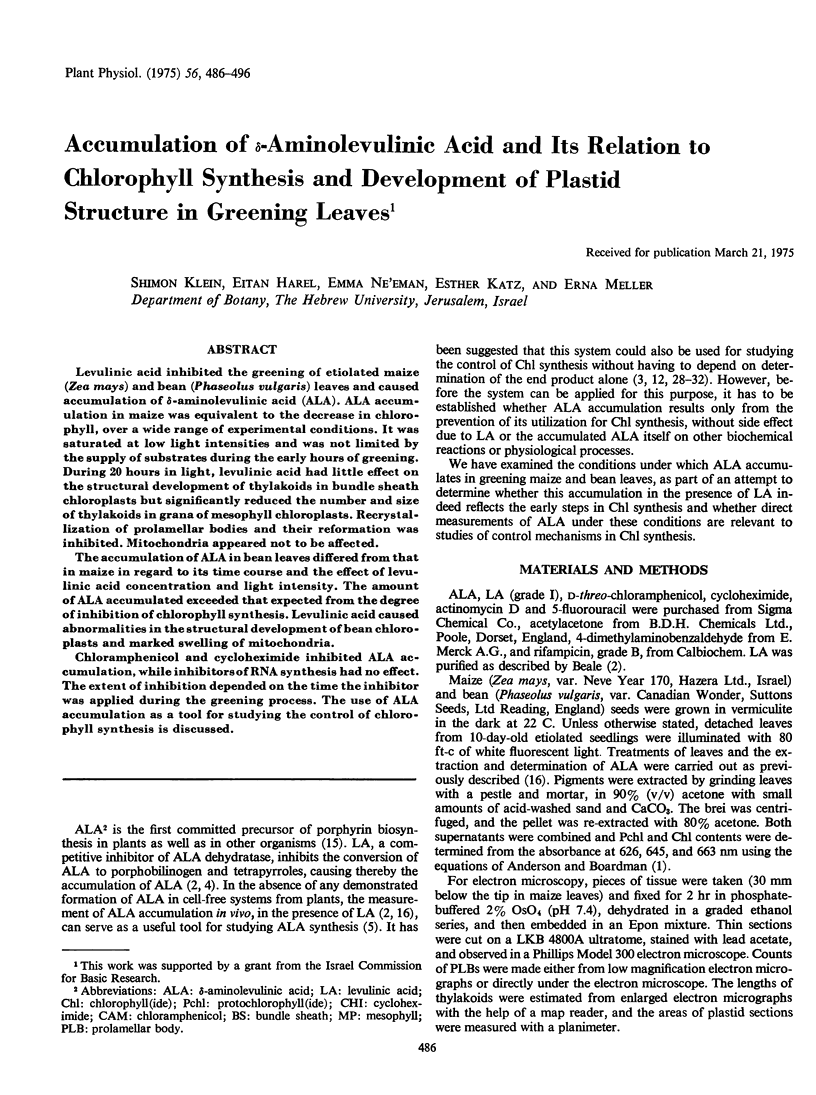
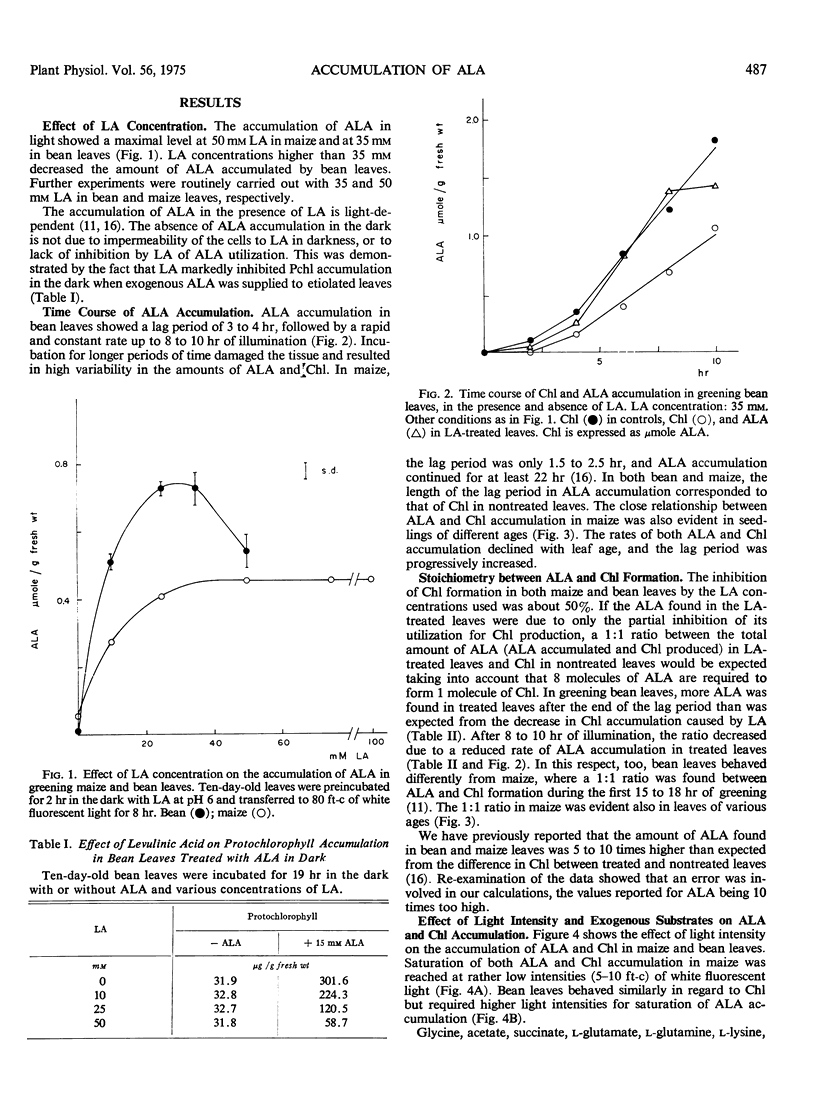
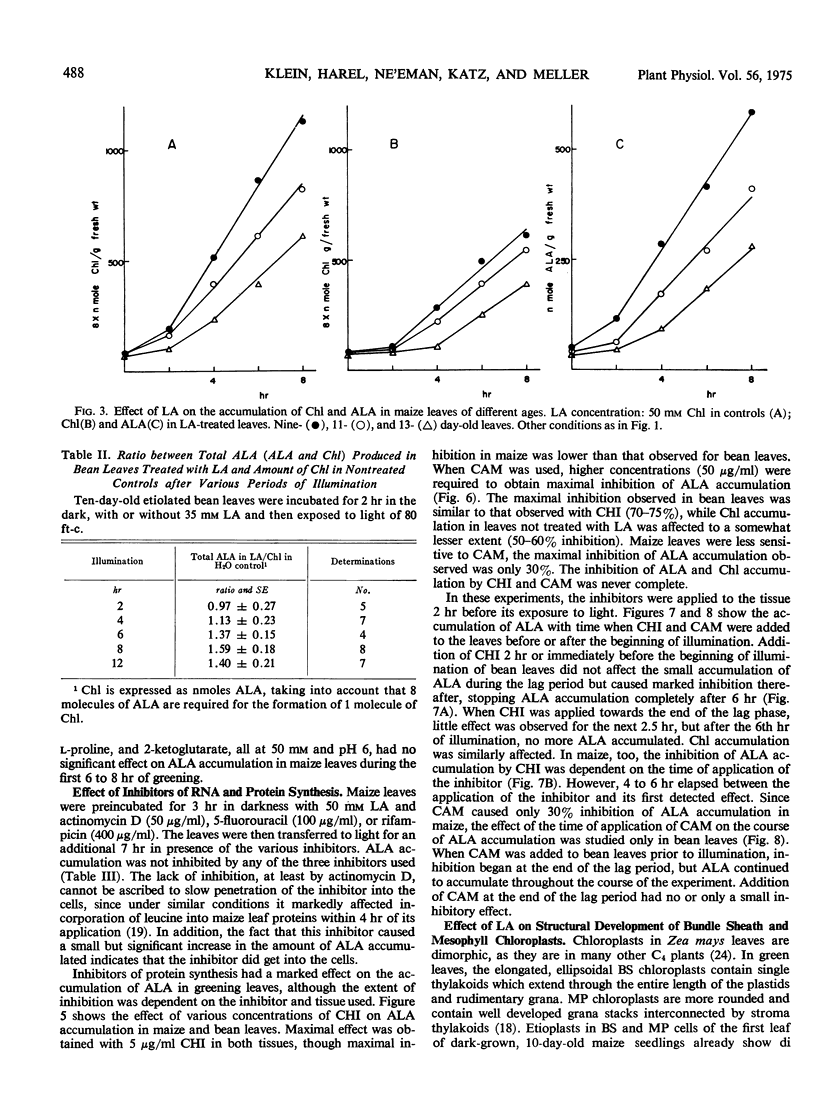
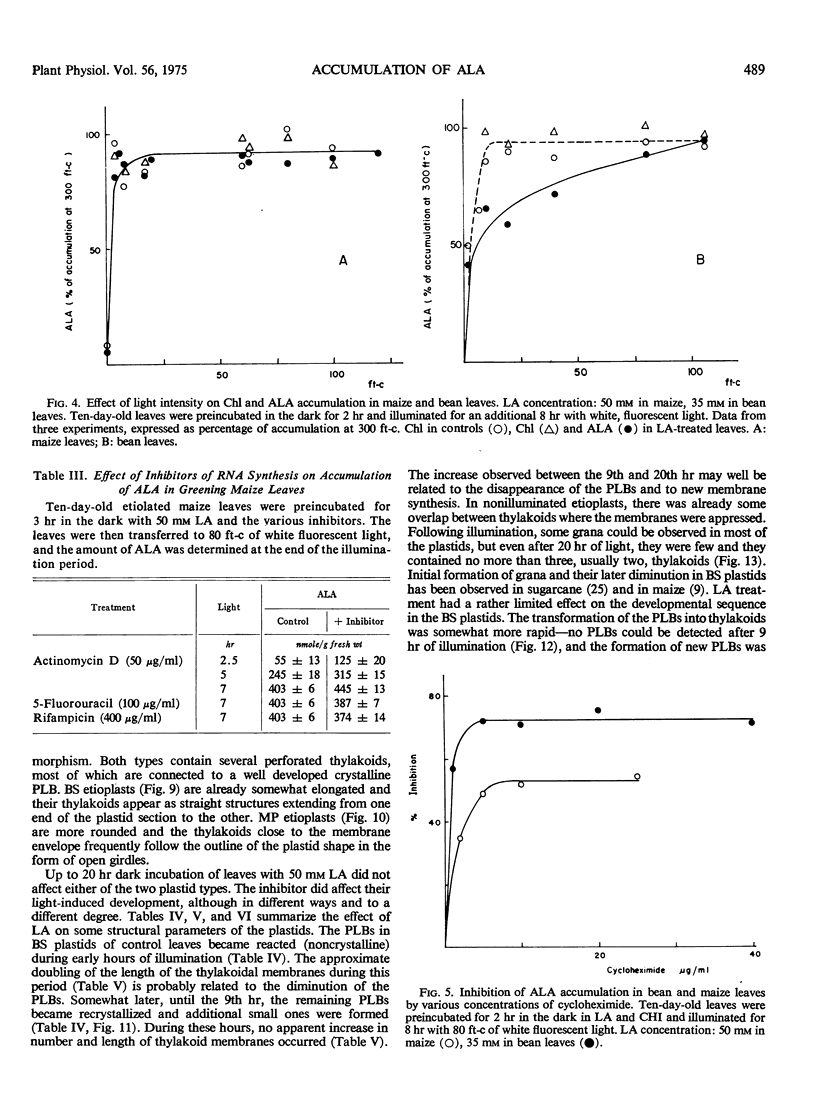
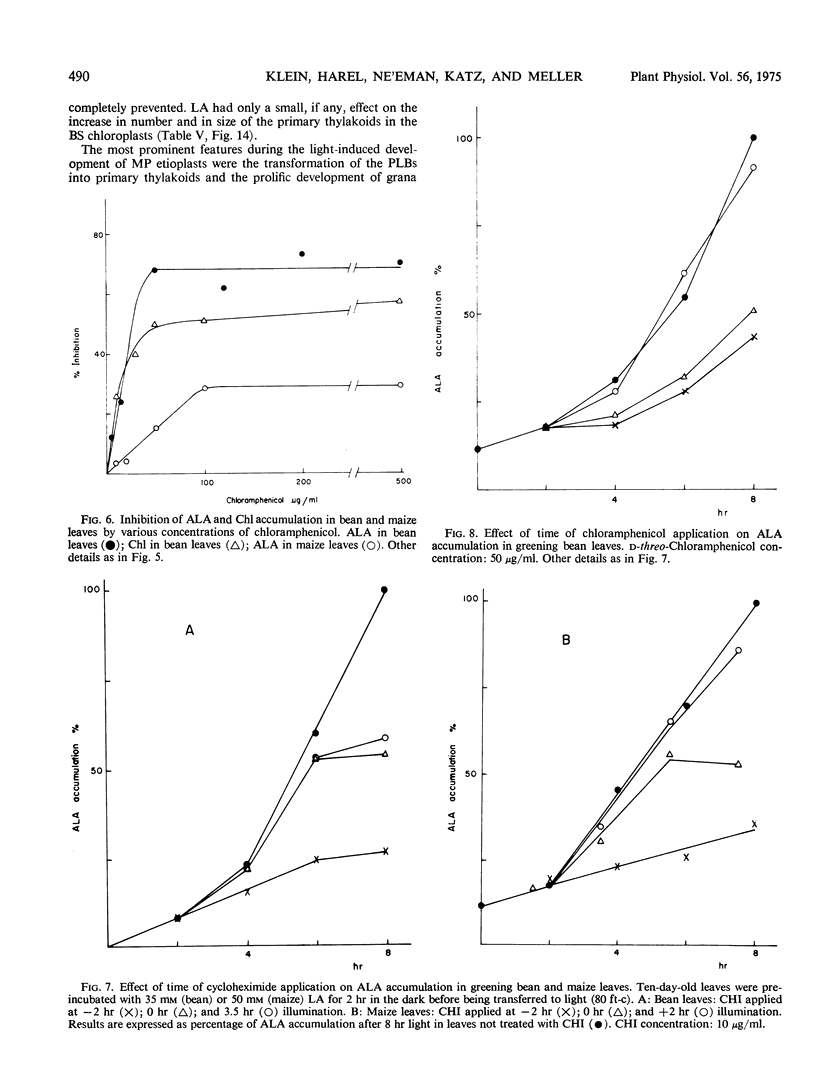
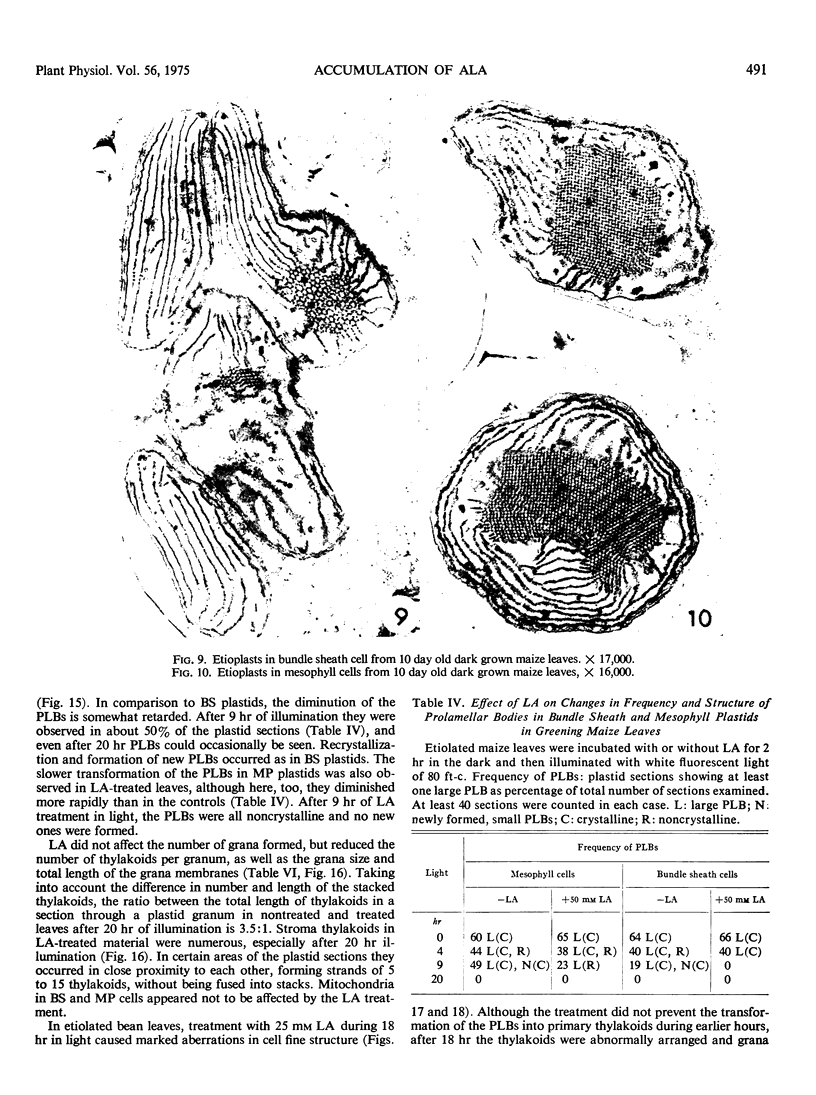
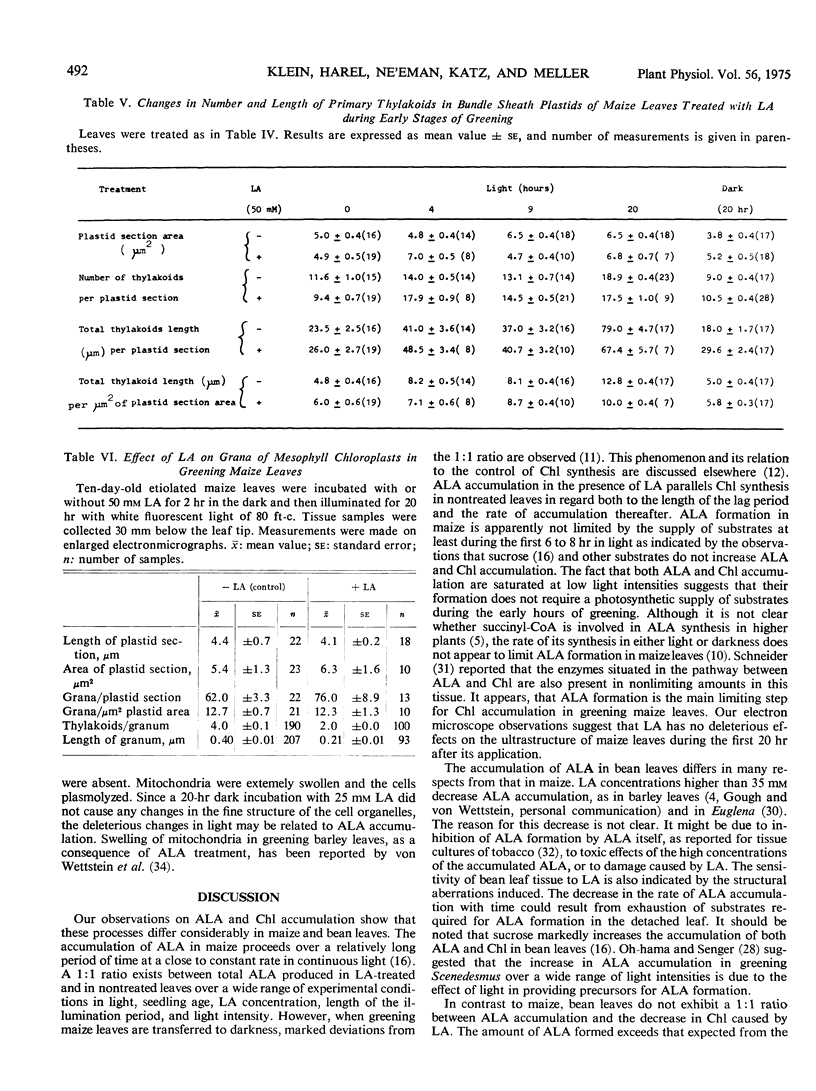
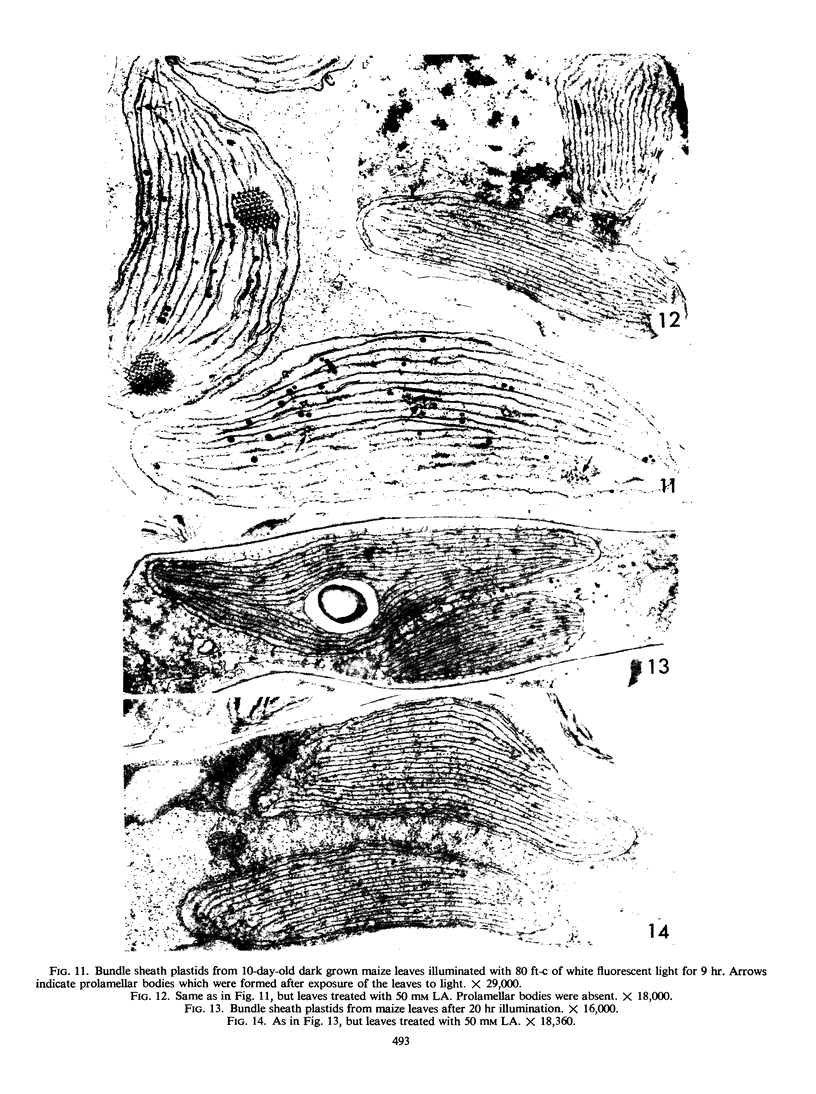
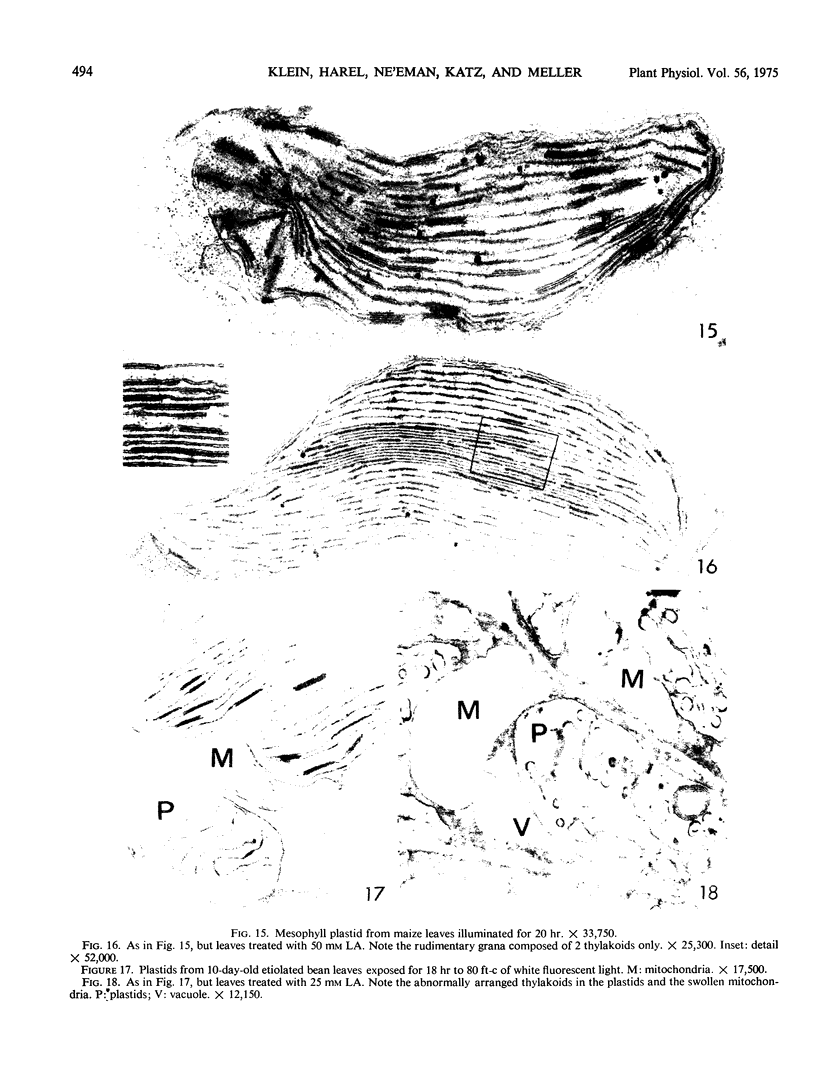
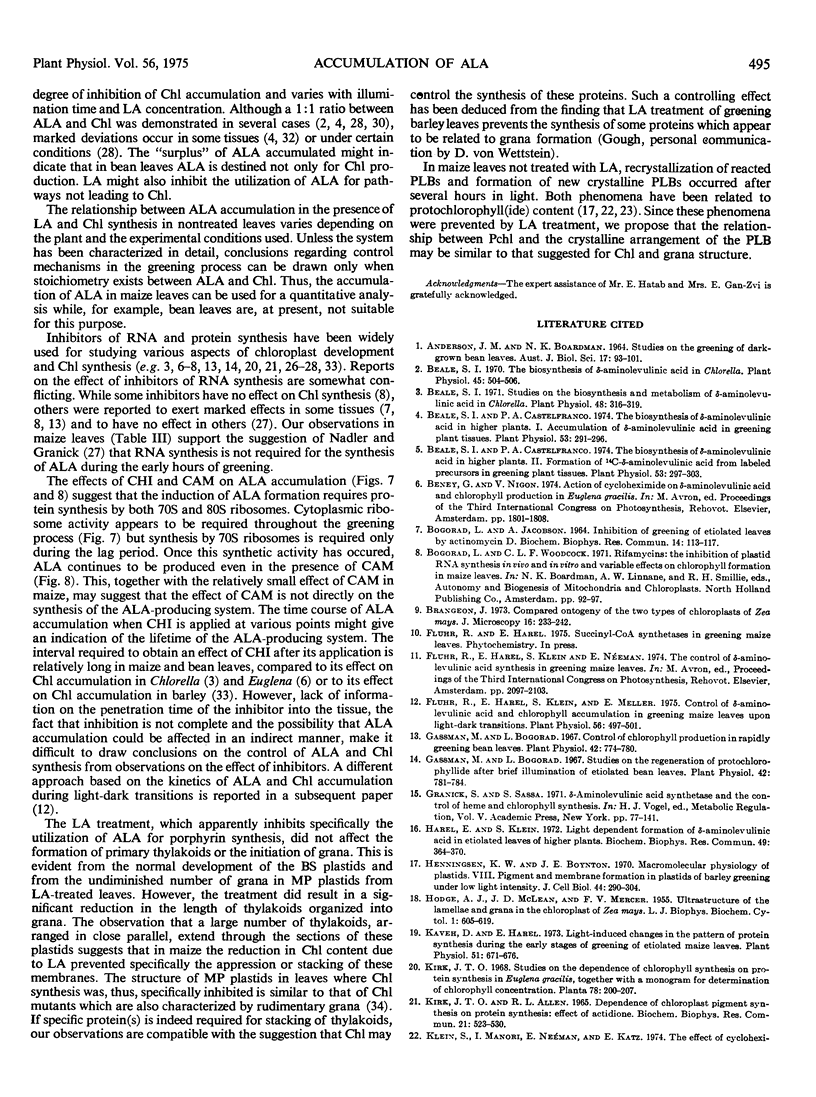
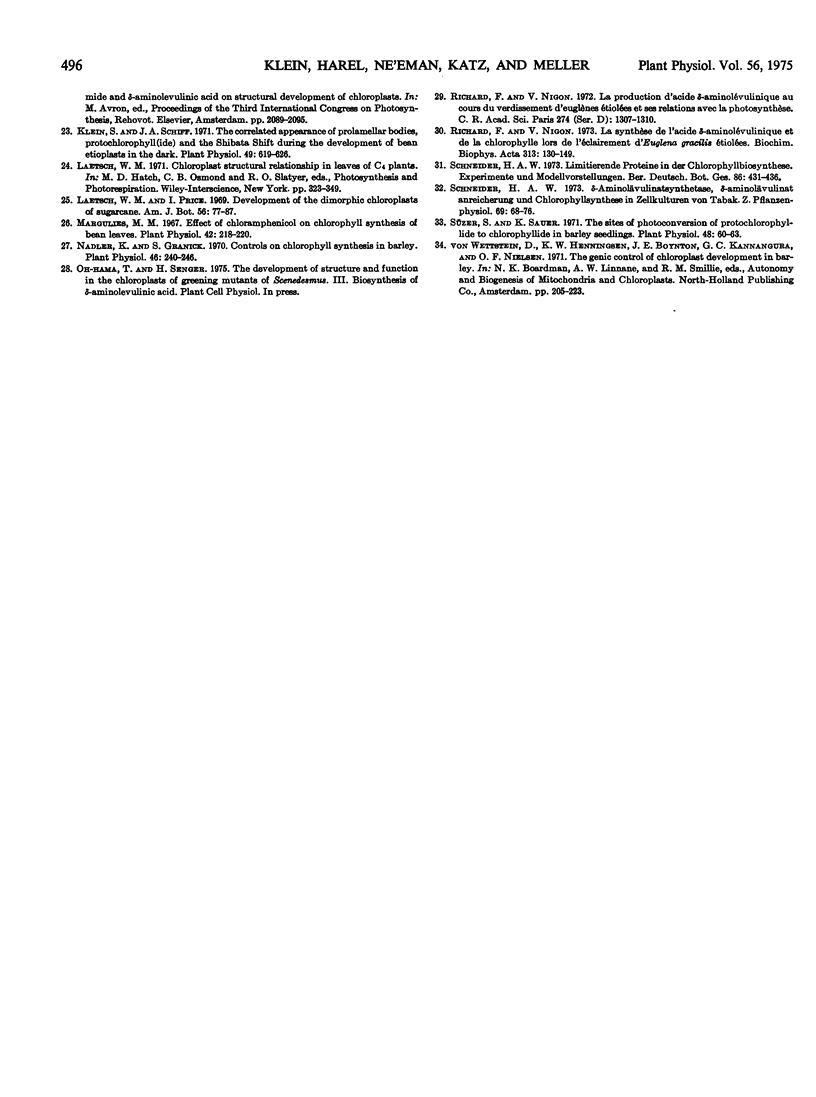
Images in this article
Selected References
These references are in PubMed. This may not be the complete list of references from this article.
- Beale S. I., Castelfranco P. A. The Biosynthesis of delta-Aminolevulinic Acid in Higher Plants: I. Accumulation of delta-Aminolevulinic Acid in Greening Plant Tissues. Plant Physiol. 1974 Feb;53(2):291–296. doi: 10.1104/pp.53.2.291. [DOI] [PMC free article] [PubMed] [Google Scholar]
- Beale S. I., Castelfranco P. A. The Biosynthesis of delta-Aminolevulinic Acid in Higher Plants: II. Formation of C-delta-Aminolevulinic Acid from Labeled Precursors in Greening Plant Tissues. Plant Physiol. 1974 Feb;53(2):297–303. doi: 10.1104/pp.53.2.297. [DOI] [PMC free article] [PubMed] [Google Scholar]
- Beale S. I. Studies on the Biosynthesis and Metabolism of delta-Aminolevulinic Acid in Chlorella. Plant Physiol. 1971 Sep;48(3):316–319. doi: 10.1104/pp.48.3.316. [DOI] [PMC free article] [PubMed] [Google Scholar]
- Beale S. I. The biosynthesis of delta-aminolevulinic acid in Chlorella. Plant Physiol. 1970 Apr;45(4):504–506. doi: 10.1104/pp.45.4.504. [DOI] [PMC free article] [PubMed] [Google Scholar]
- Bogorad L., Jacobson A. B. Inhibition of greening of etiolated leaves by antinomycin D. Biochem Biophys Res Commun. 1964;14:113–117. doi: 10.1016/0006-291x(64)90239-6. [DOI] [PubMed] [Google Scholar]
- Fluhr R., Harel E., Klein S., Meller E. Control of delta-Aminolevulinic Acid and Chlorophyll Accumulation in Greening Maize Leaves upon Light-Dark Transitions. Plant Physiol. 1975 Oct;56(4):497–501. doi: 10.1104/pp.56.4.497. [DOI] [PMC free article] [PubMed] [Google Scholar]
- Gassman M., Bogorad L. Control of chlorophyll production in rapidly greening bean leaves. Plant Physiol. 1967 Jun;42(6):774–780. doi: 10.1104/pp.42.6.774. [DOI] [PMC free article] [PubMed] [Google Scholar]
- Gassman M., Bogorad L. Studies on the regeneration of protochlorophyllide after brief illumination of etiolated bean leaves. Plant Physiol. 1967 Jun;42(6):781–784. doi: 10.1104/pp.42.6.781. [DOI] [PMC free article] [PubMed] [Google Scholar]
- Harel E., Klein S. Light dependent formation of -aminolevulinic acid in etiolated leaves of higher plants. Biochem Biophys Res Commun. 1972 Oct 17;49(2):364–370. doi: 10.1016/0006-291x(72)90419-6. [DOI] [PubMed] [Google Scholar]
- Henningsen K. W., Boynton J. E. Macromolecular physiology of plastids. 8. Pigment and membrane formation in plastids of barley greening under low light intensity. J Cell Biol. 1970 Feb;44(2):290–304. doi: 10.1083/jcb.44.2.290. [DOI] [PMC free article] [PubMed] [Google Scholar]
- Kaveh D., Harel E. Light-induced Changes in the Pattern of Protein Synthesis during the Early Stages of Greening of Etiolated Maize Leaves. Plant Physiol. 1973 Apr;51(4):671–676. doi: 10.1104/pp.51.4.671. [DOI] [PMC free article] [PubMed] [Google Scholar]
- Kirk J. T., Allen R. L. Dependence of chloroplast pigment synthesis on protein synthesis: effect of actidione. Biochem Biophys Res Commun. 1965 Dec 21;21(6):523–530. doi: 10.1016/0006-291x(65)90516-4. [DOI] [PubMed] [Google Scholar]
- Klein S., Schiff J. A. The Correlated Appearance of Prolamellar Bodies, Protochlorophyll(ide) Species, and the Shibata Shift during Development of Bean Etioplasts in the Dark. Plant Physiol. 1972 Apr;49(4):619–626. doi: 10.1104/pp.49.4.619. [DOI] [PMC free article] [PubMed] [Google Scholar]
- Margulies M. M. Effect of chloramphenicol on chlorophyll synthesis of bean leaves. Plant Physiol. 1967 Feb;42(2):218–220. doi: 10.1104/pp.42.2.218. [DOI] [PMC free article] [PubMed] [Google Scholar]
- Nadler K., Granick S. Controls on chlorophyll synthesis in barley. Plant Physiol. 1970 Aug;46(2):240–246. doi: 10.1104/pp.46.2.240. [DOI] [PMC free article] [PubMed] [Google Scholar]
- Richard F., Nigon V. La syntheèse de l'acide delta-aminolévulinique et de la chlorophylle lors de l'éclairement d'Euglena gracilis étiolées. Biochim Biophys Acta. 1973 Jun 20;313(1):130–149. [PubMed] [Google Scholar]
- Süzer S., Sauer K. The sites of photoconversion of protochlorophyllide to chlorophyllide in barley seedlings. Plant Physiol. 1971 Jul;48(1):60–63. doi: 10.1104/pp.48.1.60. [DOI] [PMC free article] [PubMed] [Google Scholar]




